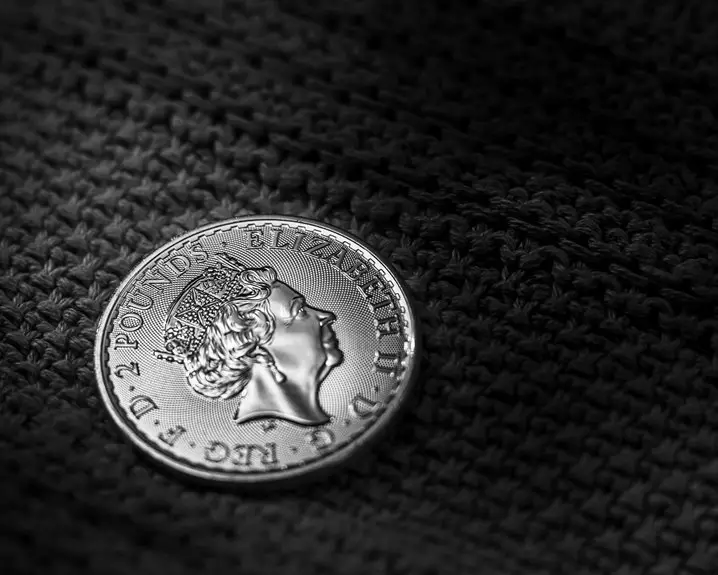When bidding on wholesale Kevlar carbon fiber fabric, focus on securing high-quality materials at competitive prices by evaluating supplier reputation, certifications, and production capacity. Buying in bulk lowers your cost per yard and helps avoid delays with ample stock. Use supplier audits and quality checks to guarantee consistency and reduce risks. Consider total ownership costs, not just upfront price. By leveraging these strategies, you’ll position yourself for successful, cost-effective procurement—explore how to optimize every step for your project’s benefit.
Table of Contents
Key Takeaways
- Secure high-quality Kevlar carbon fiber fabric to improve bid competitiveness and project reliability.
- Use supplier quality audits to negotiate better wholesale prices and ensure material consistency.
- Consider total cost of ownership, including shipping and logistics, rather than just initial fabric price.
- Build long-term supplier relationships to gain favorable payment terms and stable supply chains.
- Analyze market trends and order volumes to time purchases for optimal cost savings on bulk fabric.
Understanding Kevlar Carbon Fiber Fabric Properties
Kevlar carbon fiber fabric combines the exceptional strength of Kevlar with the lightweight durability of carbon fiber, giving you a material that’s both tough and flexible.
When you work with this fabric, you benefit from Kevlar’s high tensile strength, which resists stretching and tearing, while carbon fiber adds stiffness and excellent fatigue resistance.
You’ll notice it’s resistant to heat and chemicals, making it suitable for demanding environments. Plus, it maintains its integrity under stress without adding unnecessary weight.
This balance means you can rely on the fabric for applications requiring both durability and lightness, such as protective gear, automotive parts, or aerospace components.
Understanding these properties helps you choose the right fabric for your specific needs, ensuring performance and longevity.
Advantages of Buying Kevlar Carbon Fiber Fabric Wholesale
When you purchase carbon fiber fabric wholesale, you reveal significant cost savings that make large projects more feasible. Buying in bulk reduces the price per yard, allowing you to stretch your budget further.
You also gain consistent material quality, ensuring uniformity across your entire project. Wholesale purchasing simplifies supply management by minimizing frequent reorders, saving you time and administrative effort.
Consistent quality and simplified supply management save time and ensure uniformity throughout your project.
Additionally, having ample stock on hand prevents delays caused by material shortages. This reliability supports smoother project timelines and better resource planning.
Beyond cost and convenience, buying wholesale often grants you access to better customer support and favorable payment terms.
Key Factors Influencing Wholesale Pricing
Understanding what drives wholesale pricing can help you make smarter purchasing decisions and negotiate better deals. Several key factors influence the cost of Kevlar carbon fiber fabric when buying in bulk.
You’ll want to evaluate the fabric’s quality, as higher-grade materials often come with a higher price tag. Order volume also plays a role—larger quantities typically lower the price per unit.
Market demand and raw material availability can cause price fluctuations. Additionally, production complexity affects costs; specialized weaves or blends may increase prices.
Finally, shipping and logistics expenses impact overall pricing, especially for international orders.
- Fabric quality and grade
- Order volume and bulk discounts
- Raw material supply and demand
- Complexity of manufacturing processes
- Shipping and handling fees
How to Evaluate Suppliers for Bulk Kevlar Carbon Fiber Fabric
How do you choose the right supplier for bulk Kevlar carbon fiber fabric? Start by checking their reputation—look for consistent positive reviews and verified client references.
Verify their certifications to guarantee the fabric meets industry standards and your specific requirements.
Evaluate their production capacity and delivery timelines to avoid delays that could impact your project.
Don’t overlook quality control measures; ask about testing procedures and sample availability before committing.
Pricing is important, but balance cost with reliability and product integrity.
Also, consider their customer service responsiveness and willingness to provide technical support.
Strategies for Effective Bidding in Bulk Material Procurement
When bidding on bulk Kevlar carbon fiber fabric, you need to understand current market pricing to stay competitive.
Building strong supplier relationships helps you negotiate better terms and guarantees reliable quality.
Always balance cost with quality to make the smartest purchasing decisions.
Understanding Market Pricing
Anyone looking to secure the best deals on wholesale Kevlar carbon fiber fabric needs to grasp the factors that influence market pricing. Understanding these elements helps you bid competitively without sacrificing quality or profitability.
Prices fluctuate based on supply-demand dynamics, raw material costs, and production complexity. You should also monitor industry trends and economic shifts that impact pricing structures.
Key factors affecting market pricing include:
- Raw material availability and cost
- Manufacturing and labor expenses
- Market demand cycles and volume requirements
- Import/export tariffs and regulations
- Technological advancements affecting production efficiency
Supplier Relationship Management
Building strong supplier relationships plays an essential role in securing competitive bids for bulk Kevlar carbon fiber fabric procurement. When you maintain open communication and trust with your suppliers, you gain access to better pricing, priority service, and flexible terms.
Make sure you understand their production capabilities and constraints to set realistic expectations. Regularly engage with suppliers through meetings or site visits to build rapport and address potential issues early.
Don’t hesitate to share your procurement goals and forecast demand so suppliers can plan accordingly. By collaborating rather than just negotiating, you’ll create partnerships that encourage suppliers to offer you their best bids.
Evaluating Quality and Cost
Although securing competitive bids is essential, you must also carefully evaluate quality alongside cost to make the best bulk Kevlar carbon fiber fabric procurement decisions.
Balancing these factors guarantees you don’t sacrifice performance for price.
When evaluating suppliers, focus on:
- Material certifications and compliance with industry standards
- Consistency in fabric weave and tensile strength
- Supplier track record and quality control processes
- Sample testing results and third-party lab reports
- Total cost of ownership, including shipping and potential defects
Comparing Cost Benefits of Wholesale Versus Retail Purchases
When you buy Kevlar carbon fiber fabric wholesale, you often get markedly better prices compared to retail purchases. Wholesale lets you save per yard, especially if you need large quantities. Retail prices include higher markups and smaller package sizes, which can add up quickly. Below is a quick comparison to help you visualize the cost benefits:
| Purchase Type | Price per Yard | Typical Quantity per Order |
|---|---|---|
| Wholesale | $15 | 100+ yards |
| Retail | $25 | 1-10 yards |
| Bulk Retail | $22 | 20-50 yards |
Choosing wholesale can greatly reduce your overall spending if you’re working on bigger projects. It’s a smart move if you want cost efficiency without compromising on quality.
Tips for Ensuring Quality and Consistency in Large Orders
To keep your large orders consistent, you’ll want to check that your supplier meets strict material certification standards.
Regular supplier quality audits help catch any issues early on.
Plus, performing batch consistency checks guarantees every roll of fabric matches your expectations.
Material Certification Standards
Guaranteeing material certification standards is essential for maintaining quality and consistency in large orders of Kevlar carbon fiber fabric.
When you require certified materials, you reduce risks related to defects or performance issues, guaranteeing the fabric meets your project specifications. Always request documentation that verifies compliance with industry standards and traceability.
To guarantee certification standards, focus on these key points:
- Confirm compliance with ASTM or ISO standards relevant to Kevlar and carbon fiber.
- Verify batch traceability to track the fabric’s production history.
- Request certificates of analysis (COA) for chemical and mechanical properties.
- Ensure the supplier provides third-party testing reports.
- Check for adherence to environmental and safety regulations during production.
Following these steps helps you secure reliable, high-quality materials every time.
Supplier Quality Audits
Maintaining material certification standards sets a solid foundation, but you also need to regularly evaluate your suppliers to keep quality consistent across large orders. Conduct thorough supplier quality audits focusing on production processes, compliance, and quality control systems. These audits help catch issues early, guaranteeing reliability and mitigating risks in your supply chain.
| Audit Focus | Purpose | Benefit |
|---|---|---|
| Production Process | Verify manufacturing consistency | Avoid production delays |
| Compliance | Guarantee adherence to standards | Maintain certification validity |
| Quality Control | Assess inspection protocols | Reduce defect rates |
| Documentation | Check record accuracy | Support traceability |
Batch Consistency Checks
Consistency plays an essential role when handling large orders of Kevlar carbon fiber fabric, as even small variations can impact performance and reliability.
To guarantee batch consistency, you need to implement thorough checks that catch discrepancies early. Regular inspections help maintain quality and prevent costly mistakes down the line.
Focus on these key steps to keep your batches consistent:
- Verify fiber tensile strength and weave pattern uniformity
- Conduct moisture content and contamination tests
- Cross-check batch numbers and production dates
- Use statistical process control to monitor variations
- Collaborate closely with suppliers for real-time feedback
Frequently Asked Questions
What Industries Most Commonly Use Kevlar Carbon Fiber Fabric?
You’ll find kevlar carbon fiber fabric widely used in aerospace, automotive, and sporting goods industries. It’s perfect for you if you need lightweight, durable materials for safety gear, helmets, and high-performance vehicle parts.
How Should Kevlar Carbon Fiber Fabric Be Stored to Maintain Quality?
You should store Kevlar carbon fiber fabric in a cool, dry place away from direct sunlight and moisture. Keep it sealed in airtight packaging to prevent contamination and maintain its strength and quality over time.
Are There Environmental Concerns Associated With Kevlar Carbon Fiber Production?
You should know Kevlar carbon fiber production involves energy-intensive processes and chemical use, which can impact the environment. Proper waste management and sustainable practices help reduce these concerns, so you can minimize your ecological footprint.
What Safety Precautions Are Needed When Handling Kevlar Carbon Fiber Fabric?
Before you touch Kevlar carbon fiber fabric, you’ll want to suit up properly. Wear gloves, a mask, and eye protection to avoid irritation and inhaling fibers. Work in a well-ventilated area to stay safe and comfortable.
Can Kevlar Carbon Fiber Fabric Be Recycled or Reused Effectively?
You can recycle Kevlar carbon fiber fabric, but the process is complex and costly. Reusing it in less demanding applications works better, so consider repurposing scraps to save materials and reduce waste effectively.
- The History and Evolution of Chamois Fabric - June 22, 2025
- Chamois Fabric on Wikipedia: What You Need to Know - June 22, 2025
- How to Pronounce Chamois Fabric Correctly - June 22, 2025







